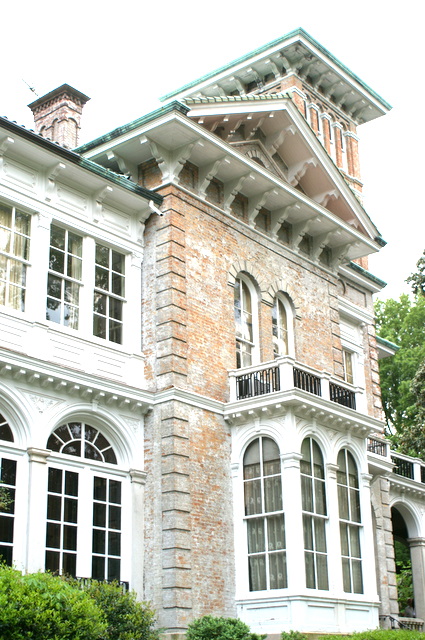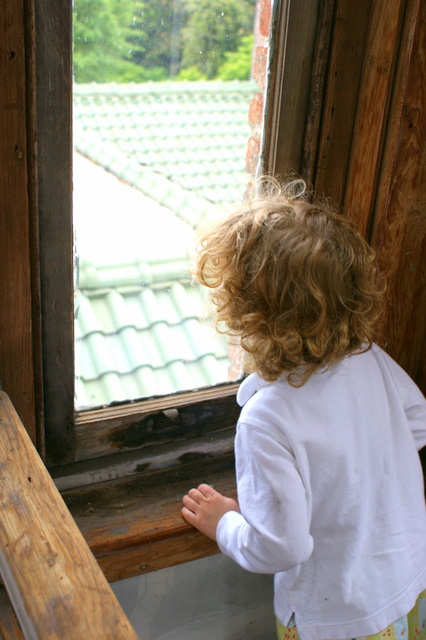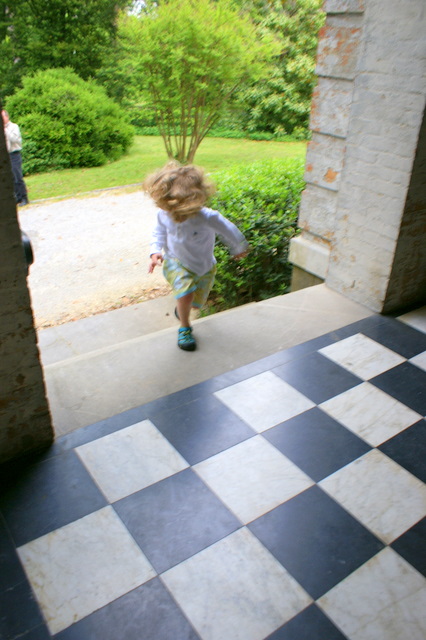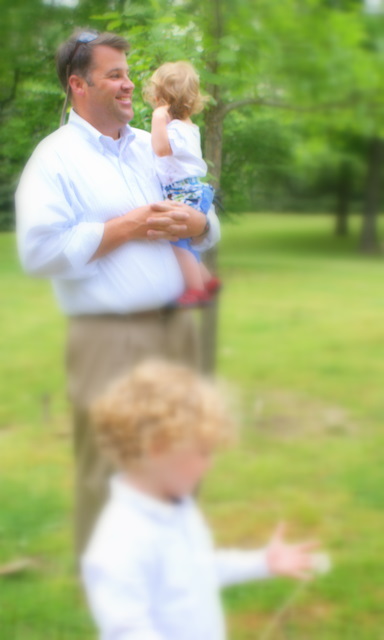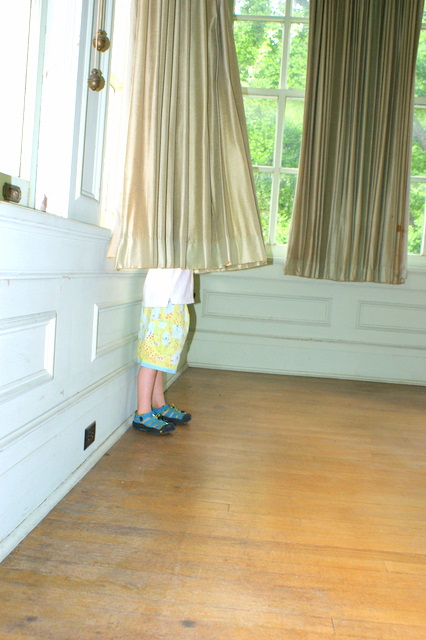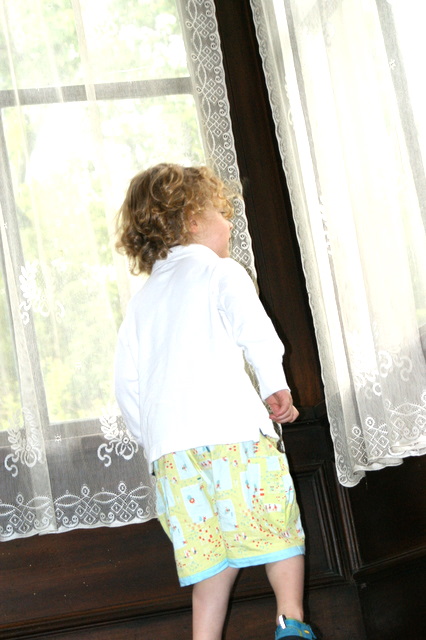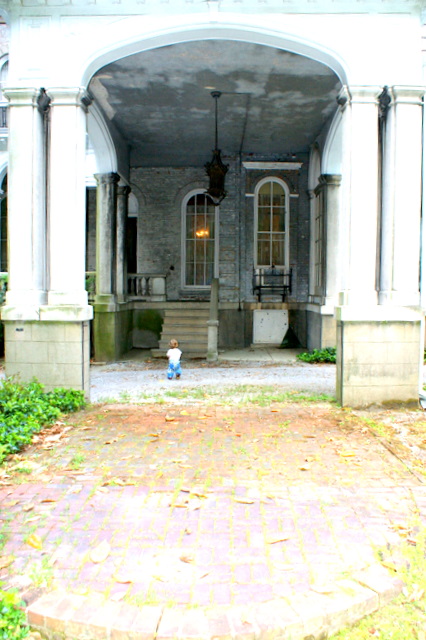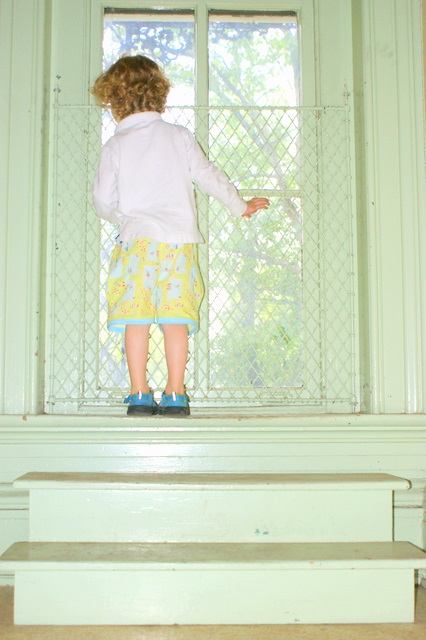village people
Thursday, May 6th, 2010my dad, a residential realtor by trade, has recently listed an antebellum home that was occupied by the same memphis family for 150 years. in response to my begging, he recently invited andy, the kids, and me to crash a happy hour gathering of architects at the site.
the archetects were like kids in a candy store, and joined me in shameless picture-taking and investigating every square inch of the home and its features, from these aqua curtain tiebacks (the product of the last re-model),
to the fourth story attic tower.
but what struck me the most about our tour of this magnificent home and the enchanted grounds around it were the conversations i overhead while we were walking around. “what would be the best use of this gem?” people asked each other. it could, once again, be a single family home, of course. or it could host a downstairs business and an upstairs residence.
or… (and these are the ideas that really inspired me) the home and grounds could be shared somehow. one architect’s idea was that two or three families could live in the home. there would be private residence space for each family and a few common area rooms. another thought was that a single family could live in the antebellum home, and several smaller homes could be built on the grounds. these “lots” would sell for modest prices, and the homes would occupy a small footprint and not diminish the manicured wildness of the tree-filled landscape. my imagination was off and running with dreams of sharing this place with family and friends, committed to raising our children in this expanse of nature located right in the heart of the city.
i have always been intrigued by groups of kinfolk and comrades who build a life together that strays from the “good fences make good neighbors” mantra of traditional american culture. when i was in divinity school, i became enamored with the bloomsbury group — virginia wolf, her husband and sister, and all of their various artist and writer friends who shared a home in england.

members of the bloomsbury group on the grounds of their home in sussex
what attracted me then was the creativity and exchange of ideas fostered by this sort of life. but now that i am a parent, i am also attracted to the idea of shared responsibility and the notion that communities or villages might just do a better job of raising our children than we can do alone.
let’s face it: andy and i cannot really afford to move our family into antebellum bliss. but our brief time on the grounds has me thinking about making intentional connections with neighbors and constructing a life where responsibilities can be shared. this is not a new idea, of course, and folks in other countries have been living this way since the beginning of time.
in bad mother, ayelet waldmen writes of her mother’s committment to shared resonsibility:
“during the headiest era of my mother’s feminist phase, she even figured out a way to spare herself the bulk of the cooking; she and the other members of her consciousness-raising group formed a supper cooperative. each day a different one of them would cook for the group, separate the food into individual family-sized portions, and drop them off at the others’ houses” (54).
along those lines, i have friends who take turns going to each others’ houses to help each other with home projects. and jennifer, who was featured in one of my early “mothers of invention” posts, wrote about a makeshift cooperative pre-school that she and other mothers created for their children.
perhaps we don’t have to pick up and physically move our families in order to move into a space of shared responsibilities. it has been said that by partnering with someone in marriage, one’s burdons are cut in half while one’s joys are doubled. perhaps this is true of all of our cooperative affiliations.
so, when i’m not thinking about how i can make the quick million i would need to move into “the big old house,” as my children call it, i’ll be pontificating about how my version of motherhood might entail becoming more of a village person. it’s fun to think about, don’t you think?
[for more info about the source for this post, check out the bibliography page on the sidebar to your right.]

